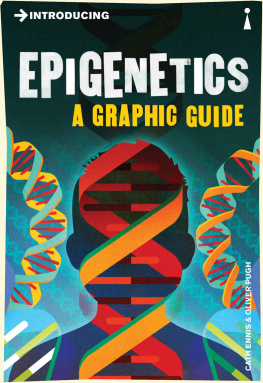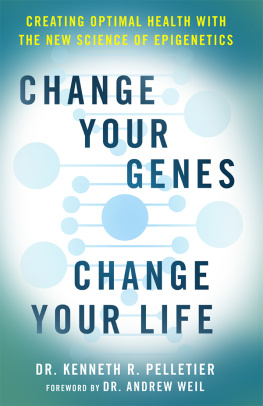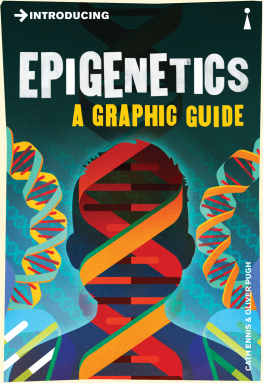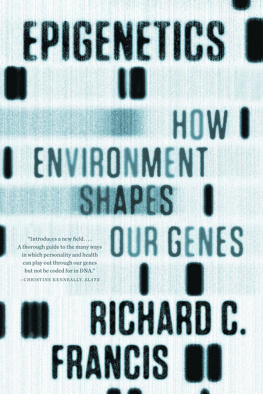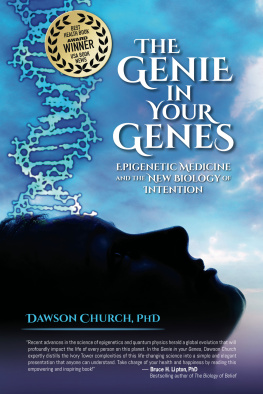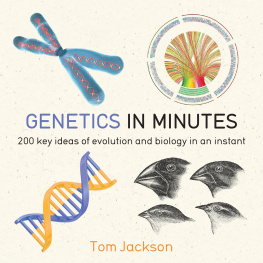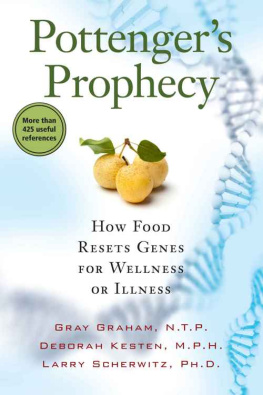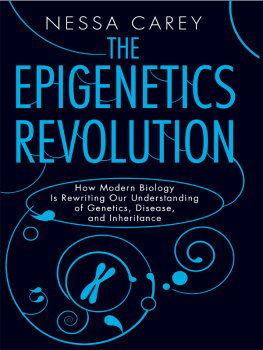Published by Icon Books Ltd, Omnibus Business Centre, 3941 North Road, London N7 9DP
Email:
www.introducingbooks.com
ISBN: 978-184831-903-5
Text copyright 2017 Icon Books Ltd
Illustrations copyright 2017 Icon Books Ltd
The author and illustrator have asserted their moral rights
Editor: Kiera Jamison
No part of this book may be reproduced in any form, or by any means, without prior permission in writing from the publisher.
Contents
Genes, RNA and Proteins
Epigenetics is about how the genes* we inherit from our parents are controlled, and how they interact with our environment: how our genes make us, well, us.
Epi- means upon, or in addition; epigenetics is the study of how additional factors interact with genes to direct the processes that make our cells* and bodies work.
Scientists have known about some of these factors for decades, but have only quite recently begun putting everything together to start explaining some of the gaps in our knowledge of genetics. From how embryos develop to how species evolve, from basic laboratory research to drug development epigenetics is becoming a hot topic of conversation!
UNDERSTANDING EPIGENETICS HOW OUR GENES INTERACT WITH OUR ENVIRONMENT AND OTHER FACTORS IS CRUCIAL TO UNDERSTANDING MANY ASPECTS OF BIOLOGY.
* Words marked with an asterisk are defined in the glossary.
To understand epigenetics, we first need to know some basic genetics.
Genes are made of deoxyribonucleic acid (DNA)*. DNA consists of long strings of four component molecules*, called bases*: A, C, G and T. The order, or sequence, of these bases along the string serves as our genetic code.
Two long strings of DNA coil around each other to form the famous double helix structure. The bases on one strand form connections with the bases on the other strand; these connected pairs are the rungs in the twisted ladder-like structure of the helix. A always connects to T, and C always connects to G.
CONNECTIONS BETWEEN MATCHING, OR COMPLEMENTARY, BASES ON OPPOSITE STRANDS OF DNA A-T AND C-G HOLD THE STRUCTURE OF THE DOUBLE HELIX TOGETHER.
The first step in translating the DNAs coded instructions is called transcription*. Part of the helix opens up, and the bases on one strand connect to new matching (complementary) base molecules. The new bases link together into a strand of ribonucleic acid (RNA)*. RNA is similar to DNA, but its short, single strands are less stable and more mobile than the DNAs long double helix.
Some types of RNA can squeeze out through tiny holes in the membrane that surrounds the cell nucleus*. DNA is too big to get through, so these RNA molecules act as coded messages from the genes to the rest of the cell.
THE DNA'S CODE IS COPIED, OR TRANSCRIBED, INTO A STRAND OF RNA, WHICH PASSES THE MESSAGE ON TO THE REST OF THE CELL.
Some of the RNAs that leave the nucleus are called messenger RNAs (mRNAs)*. mRNAs are copies of those sections of the DNA that code for large molecules called proteins*.
Proteins are extremely important. There are thousands of different types, each with a specific function. Many proteins help to control the chemical reactions that keep our cells alive and healthy. For example, proteins are needed to open up the DNA double helix and to join individual bases together into RNA strands during transcription. Other proteins are involved in digesting food, fighting infections, carrying oxygen around the body, and thousands of other diverse functions.
HEY, PANCREAS CELL, MY BOSS GENE NEEDS YOU TO MAKE SOME MORE INSULIN!
The process of converting mRNA sequences into proteins is called translation*.
Each three-base unit called a codon* of mRNA connects to a transfer RNA (tRNA)* strand that has three complementary bases at one end. The other end is attached to a molecule called an amino acid*. There are different types of amino acid, and each type can only attach to tRNAs that match specific codons.
Just as bases are the building blocks of DNA and RNA, amino acids are the building blocks of proteins. As tRNAs connect to their matching codons along an mRNA strand, their amino acids join up in the same order.
CCC, MEET PROLINE. PROLINE, THIS IS CCC.
The sequence of amino acids in each protein is specified by the sequence of codons in the corresponding mRNA, which in turn matches the sequence of bases in the DNA. The very specific relationship between a given mRNA codon and its matching tRNA molecule, which is only ever attached to a single type of amino acid, is essential to the conversion of the DNAs code into proteins.
The sequence of amino acids in a protein determines its function. As we saw before, protein functions are essential for life. This is why DNA is so important it contains all the instructions needed to make our cells and bodies work.
I FIGHT INFECTIONS! I MAKE MRNAS! I CONTROL IT ALL!
Chromosomes, Nucleosomes and Chromatin
Our complete DNA sequence is called our genome*. All humans have extremely similar genomes, although we each have a slightly different version of the sequence. Almost every cell in your body contains its own copy of your unique version of the human genome.
The human genome is divided into 23 sections called chromosomes*. Chromosomes come in pairs: we each inherit one chromosome of each pair from our mother, and the other from our father. The longest human chromosome contains about 2,600 protein-coding genes; the smallest, just 140. Genes are separated by stretches of non-protein-coding DNA.
THERE ARE TWO STRANDS OF DNA PER DOUBLE HELIX, AND ONE DOUBLE HELIX PER CHROMOSOME. THERE ARE 23 CHROMOSOMES FROM EACH PARENT, SO 46 CHROMOSOMES PER CELL. WHICH MEANS 92 STRANDS OF DNA PER CELL!
There are about 21,000 protein-coding genes in the human genome, which contains 3 billion individual bases (A, C, G and T). Laid out end-to-end, the DNA contained in a single cell would be about 1.8 metres (five feet) long. The DNA has to be twisted, folded and compacted to fit into a tiny cell nucleus.
The double helix first wraps around a cluster of eight small proteins called histones*, which bind very tightly to DNA. Each individual unit of eight histone proteins plus DNA is called a

